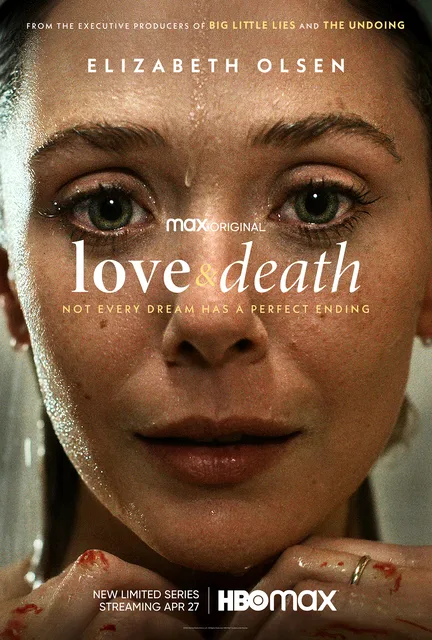On July 13th, 1980, Candy Montgomery struck Betty Gore with an axe roughly 41 times. This is undisputed. Even Montgomery herself admits it. And yet she’s the only person who knows exactly what happened. The story of the death of Betty Gore was a true-crime staple for years for many reasons—foremost among them the uniqueness of an average suburban mom becoming an ax murderer—but it’s also become a streaming mini-series obsession with Hulu’s “Candy” premiering almost exactly a year before David E. Kelley and HBO Max’s take on the subject in this week’s “Love & Death.” The differences between the two projects are interesting, but the ultimate takeaway is largely the same—this is another version of the Montgomery story that works primarily because of its talented cast. The storytelling leaves something to be desired here, and yet star Elizabeth Olsen’s work becomes increasingly mesmerizing, ably supported by solid turns from the entire ensemble, particularly Jesse Plemons and Tom Pelphrey. After all the podcasts, true crime series, and now both mini-series, I’m still not sure exactly what really happened in that laundry room over four decades ago, but it’s undeniably rich material for Hollywood to keep excavating.
Olsen plays Montgomery, an ordinary citizen of the very ordinary Wylie, Texas. She’s a devout Methodist who seems happy with her church and her husband Pat (Patrick Fugit), who’s a nice-but-bland individual. He likes to chuckle slightly at “The Love Boat,” and one gets the impression that such moments are the peak of excitement in his day, but he doesn’t mind it that way. One of the interesting elements of Kelley’s approach is in how the legendary creator captures mundanity that can still be satisfying; lives that are being lived everywhere that may not have a typically Hollywood degree of excitement but don’t seem to mind it. Even the affair that eventually leads to the murder has a fascinatingly practical air about it—two people who decide to start having sex the way they decide to bring muffins to a church social.
Those two people are Candy and Allan Gore (Plemons), the husband of Betty (Lily Rabe). After a few flirtations, Candy immediately asks Allan if they could start sleeping together. They have a few meetings about it, break down the pros & cons, and decide to go for it. Allan has had such a repressed sex life, even with a wife and children, that Candy is the first to use her tongue when she kisses him. There’s notable empathy for both people trying to break out of their suburban ruts with inherently human passions. And yet “Love & Death” is not a story of obsession. It seems clear that Kelley and company want to avoid that potential reading of the murder right from the beginning. Olsen’s version of Candy enjoys her time with Allan and regrets when it appears a support group has repaired the Gore marriage, but it’s not set up as simple as a love triangle with a jealous participant. This is far more complicated than that.
Again, we know that Candy butchered Betty with an axe. Candy has always claimed self-defense. Betty found out about the affair and threatened her. Candy had to pull the axe away to save her own life. But did she have to strike Betty 41 times? Kelley gets to the crime in the middle of the seven-episode mini-series, which allows him to dive into what he’s always cared about most as a creator: The courtroom. “Love & Death” shifts its storytelling from churches and houses to the trial of Candy Montgomery, which allows for some excellent work by Tom Pelphrey as her attorney Don Crowder (somebody give him a “Law & Order”). The “Ozark” star is excellent at conveying the legal pitfalls he’s trying to avoid in a contentious trial of an admitted murderer.
However, is the best approach to the story of Candy Montgomery and Betty Gore to give so much storytelling thrust to the defendant’s attorney? (It’s certainly a very Kelley approach.) I also missed the character work of Melanie Lynskey in “Candy” as Rabe’s version of Betty is pretty shallowly sketched. Perhaps because of the casting of the always-excellent Plemons, the balance shifts to Allan more than Betty. While that shift arguably diminishes the actual victim here, it allows the Oscar nominee for “The Power of the Dog” to remind viewers how much he can do with a simple line reading or dejected body language. He’s great here.
Everyone is, but “Love & Death” belongs to Elizabeth Olsen. The fourth centerpiece episode is a master class on her part, capturing how Candy could have gone through the day after such a brutal crime. Olsen becomes increasingly riveting as “Love & Death” unfolds, forcing us to question how much we should like, forgive, or understand her. I’m not sure we ever will. But we’ll clearly continue to be fascinated by her.
Starts on HBO Max on April 27th. Whole series was screened for review.




















